Exotic
Cydia glandicolana (Danilevsky) (Tortricidae: Olethreutinae: Grapholitini)
FWLFWL:
forewing length; the distance from the base of the forewing to the apex, including fringe : 6.5-10.0 mm
: 6.5-10.0 mm
Forewings are gray-brown, darker basally, with a conspicuous subtriangular dorsaldorsal:
upper, to the top, on the back 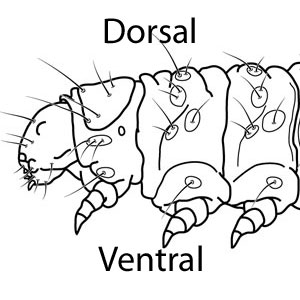 patch next to the ocellusocellus:
patch next to the ocellusocellus:
forewing pattern element - an ovoid region anterior to the tornus; adult head - a simple insect "eye" located dorsal to the compound eye 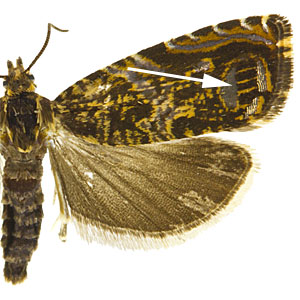 . Numerous rows of pale, paired costal strigulaecostal strigulae:
. Numerous rows of pale, paired costal strigulaecostal strigulae:
small, usually pale, semirectangular marks along the costa 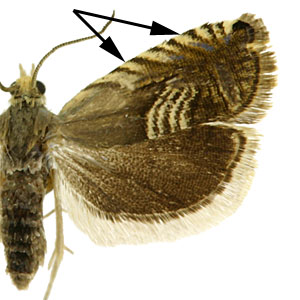 are present. Hindwings are grayish brown.
are present. Hindwings are grayish brown.
Male genitalia are characterized by the absence of an uncusuncus:
a sclerotized process which is fused to the posterodorsal margin of tergum IX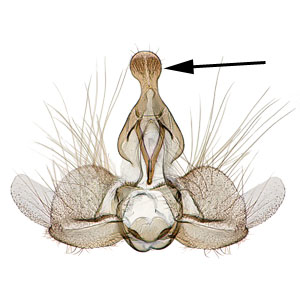 ; large, distally rounded valvaevalva:
; large, distally rounded valvaevalva:
an appendage flanking the intromittent organ that is used to clasp the female during copulation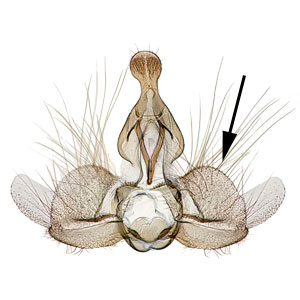 ; and a thin, whispy phallusphallus:
; and a thin, whispy phallusphallus:
the male intromittent organ (penis); see "aedeagus"  . Female genitalia are characterized by a short ductus bursaeductus bursae:
. Female genitalia are characterized by a short ductus bursaeductus bursae:
a membranous tube connecting the ostium bursae to the corpus bursae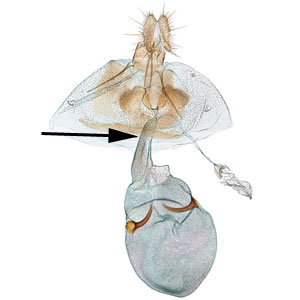 and a large, globose corpus bursaecorpus bursae:
and a large, globose corpus bursaecorpus bursae:
a dilated membranous sac at the anterior end of the bursa copulatrix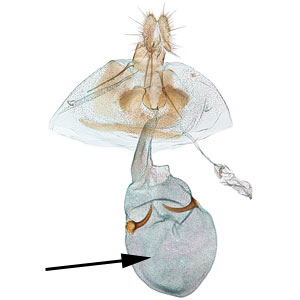 with a pair of small, tack-like signasignum:
with a pair of small, tack-like signasignum:
a sclerotized projection or patch on the interior of the corpus bursae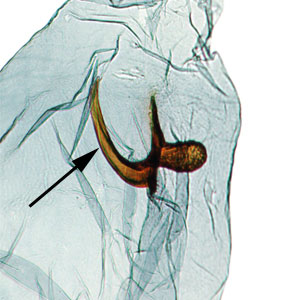 .
.
The following account is summarized from Swatschek (1958)Swatschek (1958):
Swatschek, B. 1958. Die larval systematik der wickler (Tortricidae und Carposinidae) aus dem zoologischen Institut der Universitat Erlangen. Akademie-Verlag, Berlin. 269 pp. [Abhandlungen zur larvalsystematik Insekten 3.] and Brown & Komai (2008).
Mature larva approximately 17 mm in length; head light brown; prothoracic and anal shields reddish yellow; body whitish, with orange‑to‑red, suffused, longitudinal stripes, pinaculapinaculum:
flattened sclerotized plates on a caterpillar that bear the setae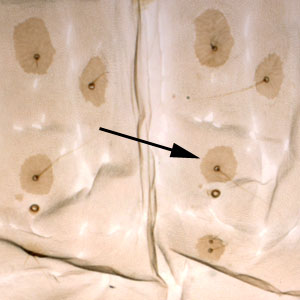 orange to red; anal fork absent; SV group on A1, 2, 7, 8, 9 numbering 3:3:2:1:1; anal fork absent.
orange to red; anal fork absent; SV group on A1, 2, 7, 8, 9 numbering 3:3:2:1:1; anal fork absent.
Detailed figures of larval chaetotaxychaetotaxy:
the arrangement of setae (in reference to Lepidoptera larvae), often depicted on a "setal map"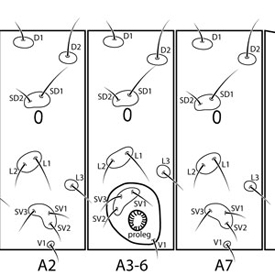 are available in Komai & Ishikawa (1987).
are available in Komai & Ishikawa (1987).
Other similar species include Cydia splendana and Cydia kurokoi. A dark patch surrounds the ocellusocellus:
forewing pattern element - an ovoid region anterior to the tornus; adult head - a simple insect "eye" located dorsal to the compound eye  on the distaldistal:
on the distaldistal:
farthest from body, distant from point of attachment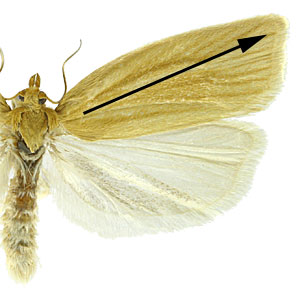 one-third of the forewing in both of these species. A genitalic dissection can be used to confirm identity.
one-third of the forewing in both of these species. A genitalic dissection can be used to confirm identity.
Other tortricid Castanea pests include Cydia fagiglandana, Cydia kurokoi, Cydia splendana, Fibuloides aestuosa, and Pammene fasciana. Brown & Komai (2008) provide a description and key to larvae of these species. Cydia glandicolana larvae can be distinguished by the following characters: reddish abdomen with inconspicuous pinaculapinaculum:
flattened sclerotized plates on a caterpillar that bear the setae ; D2 pinaculapinaculum:
; D2 pinaculapinaculum:
flattened sclerotized plates on a caterpillar that bear the setae fused to each other on A9; distance between V setae on A9 greater than on A8; 19-26 crochetscrochets:
fused to each other on A9; distance between V setae on A9 greater than on A8; 19-26 crochetscrochets:
hooked spines on the prolegs of lepidopterous larvae 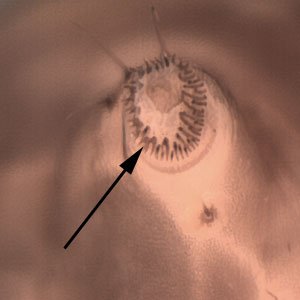 on abdominal prolegs; anal combanal comb:
on abdominal prolegs; anal combanal comb:
a toothed structure on the last abdominal segment used to eject frass away from the feeding larva; also termed "anal fork"  absent.
absent.
The following account is summarized from Komai & Ishikawa (1987).
Cydia glandicolana completes one generation per year. Adults are present July through September. Larvae feed within chestnuts and acorns. Overwintering occurs in leaf litter as a late instar.
This species is a pest of chestnut in China. In Japan it has only been recorded feeding on oak.
| Host plant | Host plant family | Reference(s) |
| Castanea mollissima | Fagaceae | Danilevsky & Kuznetzov 1968; Komai & Ishikawa 1987 |
| Castanea sp. | Fagaceae | Komai & Ishikawa 1987 |
| Quercus dentata | Fagaceae | Komai & Ishikawa 1987 |
| Quercus mongolica | Fagaceae | Danilevsky & Kuznetzov 1968; Komai & Ishikawa 1987 |
| Quercus serrata | Fagaceae | Komai & Ishikawa 1987 |
| Quercus sp. | Fagaceae | Oh et al. 2001Oh et al. 2001: Oh, K. S, Bae, Y. S., Park, J. D. 2001 Moth pests of Quercus (Fagaceae) cone. Korean Journal of Entomology. 31: 221-224. |
View full screen host table here
Cydia glandicolana is distributed throughout east Asia, with records from China, Korea, Japan, and southeastern Russia.